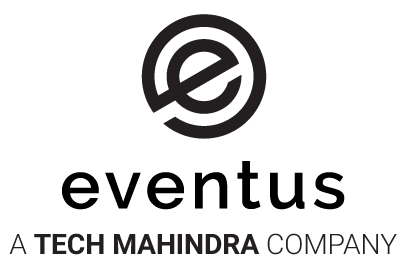The Five Types of 311 2.0 Projects
27
AUGUST 2019
Eventus
Following the initial introduction of 311 fifteen years ago and the widespread rollout of first generation 311 systems in the early 2000s, the 311-industry settled into a period of quiet stability. However, that period is now over. Private companies like Apple and Zappos have ‘raised the bar’ on the definition of good customer service. As a result, consumers now have higher expectations for government services as well. North American municipality, county, state and provincial governments have responded with a variety of new 311 initiatives that have reinvigorated the entire 311 space.
At Eventus, our contact center consulting experts have had the opportunity to work with a number of government agencies on such “311 2.0” projects. In doing so, we have identified five different categories of projects that we described in a recent whitepaper.
1. New 311 Programs
Many governments are looking to meet increased constituent expectations by implementing their first 311 programs. Such organizations never implemented 311 during the initial phase of 311 deployments in the early 2000s. In addition, some new projects are consolidation efforts by a county or state to cover the entire region rather than just a town or city.
These initiatives sometimes grow from an elected official’s desire to provide their constituency with a single point of contact for all government services. They may also derive from the maturation of a citywide contact center, or a mayor’s correspondence unit, or a desire to provide more transparency for constituent services.
Organizations embarking on new 311 services now have two huge advantages over entities that were early adopters and implementers of 311. First, there are many lessons they can learn by studying past 311 deployments. Assuming they hire a strategic contact center consulting services partner with significant 311 experience, they should be able to avoid the hard lessons already learned by others.
Second, if they have little to no legacy technology on which to base their 311 system, they can purchase the latest cloud-based services for their program. This way, they can allow phasing of various capabilities like CRM and omnichannel in a logical manner that aligns with the growth of the program as well as adoption in the community. These cloud-based systems offer outstanding features and functionality with the ability to write in IT costs in the OPEX column with flexibility to make adjustments if budget conditions change.
Launching a new 311 program does not come without its challenges. Because constituents and employees have not been able to benefit from 311, there is a longer adoption lifecycle as both parties need to be educated on the value proposition. Furthermore, entities implementing 311 for the first time now are at the very beginning of a significant change management process. Best practice for entities in such a situation is to make sure they include a comprehensive communication strategy targeting all relevant audiences, as well as sufficient resources to support internal and change management in their project plan.
2. Rebranding or Re-launching
Outside factors like lack of community adoption, changing demographics, loss of revenue, and the digital divide have left some 311 programs with less than optimal results. In addition, some internal factors like cost per call or case, failed system integrations, internal skills gaps, and technology that never worked properly have also contributed to reductions of 311 program scope or even re-evaluating the requirement to support a 311 program.
Organizations in this situation find themselves taking a step back to better define what they want their 311 program to offer and how they want to deliver those services. This analysis needs to be done with sensitivity to budget and total cost of ownership. Best practices are to undertake a comprehensive assessment of the existing 311 program’s people, processes and technologies in the context of the organization’s medium and long-term goals, as well as its fiscal position. Such an engagement should include interactions with not only government employees, but constituents as well.
3. Modernization of Current State
Due to the age of a number of 311 programs, a large majority of organizations are at a point where a technology refresh is required. The most common technologies that get modernized in 311 programs are Customer Relationship Management (CRM) applications and the telephony infrastructure that provides contact routing and queuing, self-service and unified communications. Historically these are referred to as Automatic Call Distribution (ACD), Interactive Voice Response (IVR) and Computer Telephony Integration (CTI) functionality. Other contact center technology that may come into scope of the refresh are performance management systems that support workforce management (WFM), quality management and contact monitoring and recording, and customer satisfaction (CSAT) and feedback.
A primary driver for CRM upgrades is the desire for a fully integrated omnichannel management capability that allows agents to see a complete record of all communications with a particular constituent, regardless of which communications channels the constituent used. Given the rapid adoption of mobile devices such as smart phones and tablet computers, another major CRM driver is the desire for dedicated mobile app support for constituents and government employees alike. Modern cloud-based CRM systems have outstanding support for omnichannel management as well as mobile app support.
Undertaking a technology modernization requires an evaluation of current state, strategy definition, identification of a target state, and transition planning. Then the process can move to RFP development, vendor selection, implementation, change management and cutover to the new system.
4. Optimization of Current State
Some 311 programs have already made investments in new technologies like omnichannel, cloud, mobile, unified agent desktop and SIP (Session Initiation Protocol), and are looking to leverage those investments to provide better constituent and employee experiences. Given these organizations already have modern technology, the focus of optimization activities shifts to making sure the people, process and organization are ideally structured and integrated to gain maximum benefit from the organization’s technology investments. Examples of focus areas include process automation opportunities, customer engagement processes, deep analytics (speech, text, and desktop), customer experience programs, and performance optimization.
A prerequisite for a proper optimization project is a good understanding of strengths and weaknesses of the existing 311 program. This understanding generally comes from having the right key performance indicators (KPIs), and KPIs come from having a plethora of data points and a solid analytics capability. If an organization wants to optimize but does not have the necessary analytics and right KPIs in place, it may be a better candidate for a modernization project. Modern cloud CRM applications and customer interaction platforms now have outstanding analytics capabilities that vastly surpass those available in previous generation products.
5. Unified Communications Centers
Municipalities and state governments with well-established 311 operations are starting to leverage their 311 infrastructure to support other government contact centers. This results in the creation of a unified communications center. A key to designing, building and operating a unified communications center successfully is to adopt a technology and process strategy of ‘common where possible, different where necessary’. Doing so can provide dramatic cost savings, as well as dramatic service improvements via the deployment of best practices across all contact centers.
With a unified communications center, the business and technical capabilities of the contact center are central to service design for all departments participating in the initiative. This service design thinking centers around the constituent lifecycle and integrated service delivery. Government employees who support multiple business processes such as 911, 311, 211, etc. are collocated within the same facility, and leverage the same platforms and technical infrastructure. This enterprise approach typically focuses on the constituent journey, architects more integrated and transparent processes, and enables a more holistic approach to the delivery and support of services provided.
Similar Blogs
Built In Honors Eventus in Its Esteemed 2024 Best Places To Work Awards
Denver, CO // January 9, 2024 —Built In today announced that Eventus was honored in its 2024 Best Places To Work Awards. Specifically, Eventus earned a place on Best Midsized Places to Work in Colorado in Denver. The annual awards program includes companies of all sizes, from startups to those in the enterprise, and honors both remote-first employers as well as companies in large tech markets across the U.S.
Eventus Solutions Group, a Tech Mahindra Portfolio company, Launches Navixus™
Eventus, a leading provider of digital transformation, consulting, and business re-engineering solutions, has announced today the launch of a new business unit Navixus™, within Tech Mahindra Business Process Services (BPS). Navixus™ will combine Tech Mahindra’s Business Process Services’ automation, analytics, and consulting with Eventus’ customer experience (CX) and transformation capabilities to offer a holistic digital transformation suite to customers.


